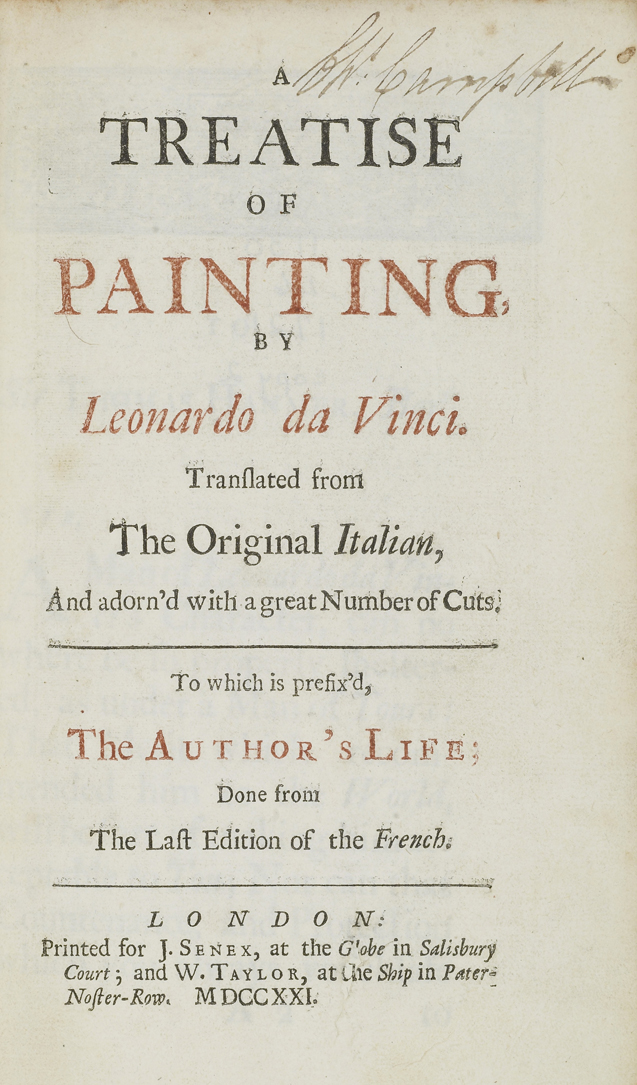
A Treatise on Painting, by Leonardo da Vinci
1721
Senex and Taylor, London
Illustrations:  | Chapter Display  |
I331
The two Muscles which serve to move the larger Fucil of the Arm, have their Origin near the middle of the Bone named Adjutorium, one behind the other; the Office of the hindmost being to stretch the Arm, and that of the other to contract it.
Now, to find which is the greatest Force, whether that wherewith a Man pulls towards him, or that wherewith he trusts from him; it must be observed, that in my Treatise De Ponderibus, I have already prov'd, that of two Weights equally heavy, that will have the greatest Force, which is the farthest removed from the Centre of its Ballance; whence it follows, that N B and N C being two Muscles of equal Power; N C, which is before, will have a greater force, than the other N B, which is behind; inasmuch as it is fastened to the Arm in C, a place further removed from the middle of the Arm, or from the Elbow A; than B, which is just off the middle it self: So that the Point is now determined. This however, is but a simple Power: The compound Power being what I now proceed to consider; by a compound Power I mean that, which a Man exerts, when to the Action of his Arms, he adds some other secondary Force, as the Weight of his Body, or the effort of his Legs and Reins; An instance of this Power is shewn in the adjoyning Figures; which are seen to struggle, the one to thrust, and the other to pull down a Pillar; each to that end, making a joynt effort with his Arms, Reins, and Legs.